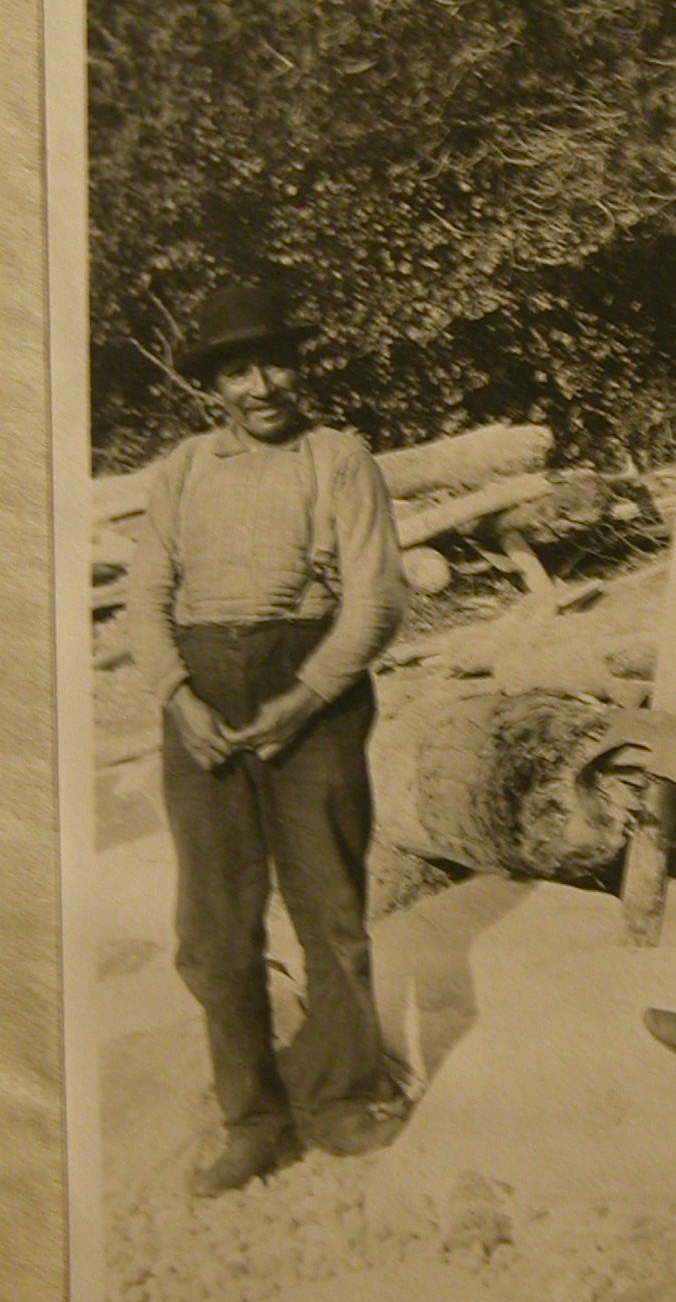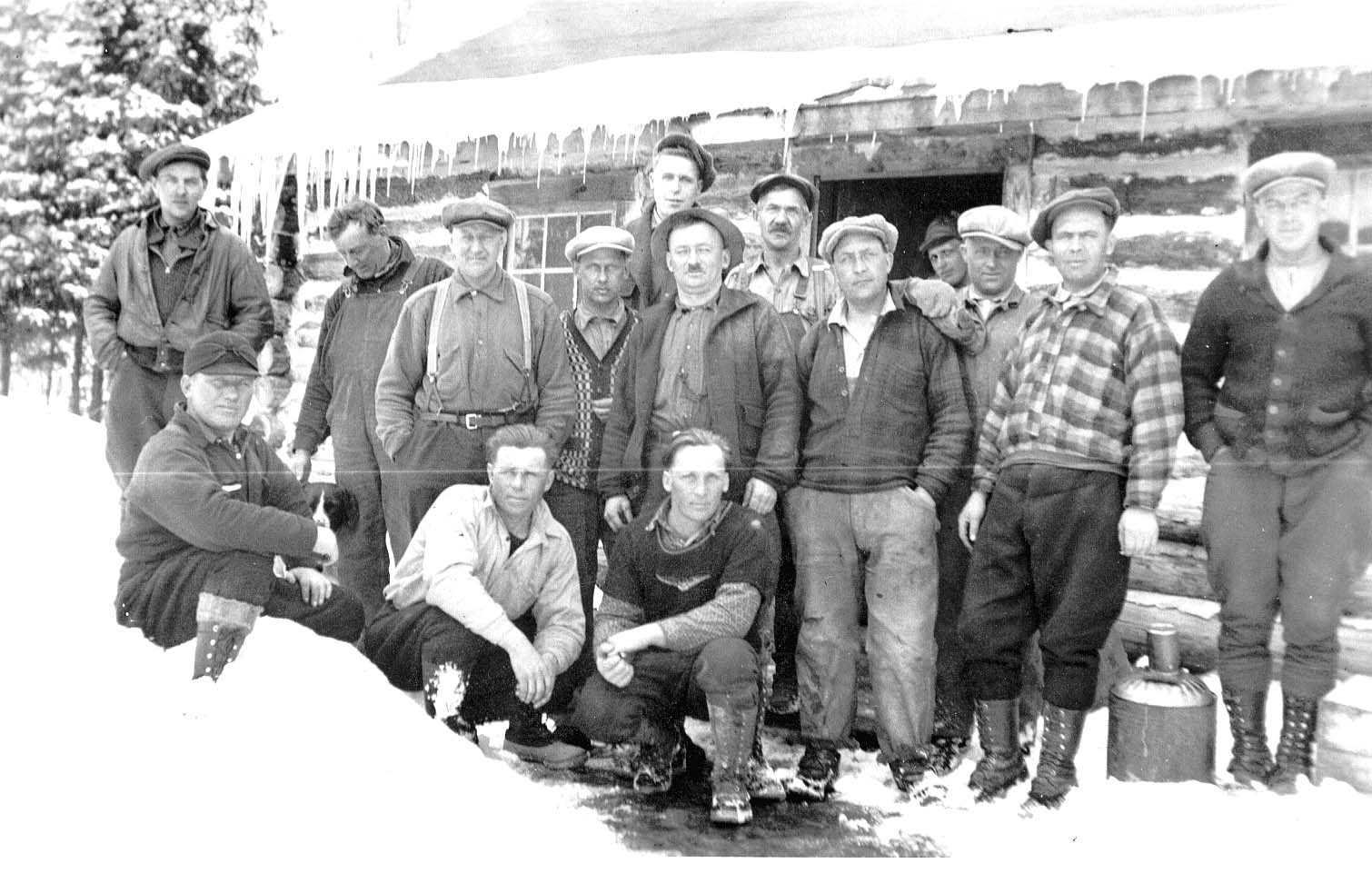Mining and Logging
Gold, Iron Ore, and logging all helped build the foundation of what Wawa once was, and continues to be today. European immigrants made there way to Wawa after the war and established themselves working in the newly formed gold mines. These gold mines led to other mining and logging in the area, many of which are making a comeback.
Wawa Gold Booms |
|
The Michipicoten Ojibway couple of Louise Towab and William Teddy uncovered a rich vein of gold during a picnic on the scenic shoreline of Wawa Lake. Hundreds of prospectors flocked to the region panning and picking their way through Wawa's forests searching for their fortunes. For the next 100 years Wawa was a vibrant centre of mining activity in Northern Ontario. Mine shafts and communities dotted the hills surrounding Wawa Lake. During the depression era of the 1930's, Wawa was experiencing an unprecedented gold boom. Fully functional communities like Parkhill had a population of 300 hundred gold miners, workers and their families.
William Teddy (source: Town of Wawa Heritage Committee) |
Iron Ore Legacy |
|
The 1897 gold fever that struck Wawa led to the unexpected discovery of iron ore in 1898. Rock samples made their way into the hands of Francis Hector Clergue, an American entrepreneur who at once recognized the ore for its potential in the form of a great steel empire in Sault Ste. Marie. This discovery transformed Wawa and the Algoma District. Within 2 years, Clergue and his newly formed Lake Superior Power Corporation immediately began operations at Helen Mine on top of the massive mountain of iron bordering Wawa Lake's northern shoreline. With the demand for steel and iron during World War II, a sinter plant was built in Wawa to treat the increased tonnage of siderite iron from the Helen Mine. Workers and families from the newly abandoned gold mines relocated to Wawa. Attracted to the high wages and vibrant Canadian lifestyle, Wawa became home for many European immigrants after the end of the war. For 60 more years Wawa residents and Algoma Ore carved a unique community out of the rugged Northern Algoma landscape. Wawa developed in a complete community with;
All the necessary services to that made Wawa a highly attractive and lively community able to enjoy the benefits of the mineral rich landscape. When Algoma Ore ceased operations in 1998, Wawa's iron mine was the last operating underground iron mine in North America. As with many resource-based economies, Wawa's mining industry has experienced a number of boom and bust eras. While iron mining is no longer the main source of Wawa's economic survival, gold, diamonds and a growing collection of other minerals continue to entice prospectors and mining speculators with the potential wealth still hidden beneath our feet.
Photo Gallery: Gold Mining will appear here on the public site.
|
Logging History |
|
Wood was first harvested along the Magpie and Michipicoten Rivers in 1900. Pulpwood and logs for railway ties were cut along the brand new Algoma Central Railway right of way between Michipicoten Harbour and the newly opened Helen Iron Mine. Farmers and labourers from Eastern Canada looking for winter work would travel to the Michipicoten area to take up axe and saw in the remote logging camps scattered throughout the region. The main method of logging was to fell the trees by hand, haul the logs by horse on icy winter roads and pile the harvested wood onto frozen lakes. A series of dams was constructed on the outgoing streams of these lakes to ensure high water levels. During the spring thaw, the wood would drift to the dams, which would be opened in a particular sequence to ensure the swiftest flush of wooden debris down the rocky, river bed to its next destination. Despite their best efforts, the rivers sometimes jammed and waterfalls like this one became a mammoth tangle of pulpwood debris. t often took many strong backs, ingenuity and good old-fashioned dynamite to clear the way. Magpie High Falls would often be seen with thousands of 8 and 4 foot pulp logs crashing over the 70 foot chasm. The 90 degree sweep of the river was often blocked with wood which had to be pushed, pried and prodded loose to continue the rest of its swift descent downstream to the Michipicoten River. Where the Magpie meets the Michipicoten below Silver Falls at Michipicoten River Village, the logs were rafted and prepared for their journey on Lake Superior. During spring log drives, surefooted workers called Rodeo Hogs had the job of hopping and dancing across the floating logs near the river mouths. The wood was bound into huge wooden rafts surrounded by large boom logs. these rafts were then ready to be towed down the eastern Superior shoreline to the pulp mills in Sault Ste. Marie. During World War Two, German Prisoners of War helped fill the labour shortage in the logging operations on the Magpie and Michipicoten Rivers. Forestry continues to play a role in Wawa's economy today.
inset image: Michipicoten lumberjacks (source: Town of Wawa Heritage Committee)
|
Big Lakes, Big Memories
Welcome to The Municipality of Wawa, One of Ontario's Premier Four Seasons Destinations.











 Gold in 1897 transformed the quiet fur trading country of Michipicoten into a bustling miniature Klondike.
Gold in 1897 transformed the quiet fur trading country of Michipicoten into a bustling miniature Klondike. Abandoned logging roads, Lake Superior boom logs, and the jumble of pulpwood found at the base of Scenic High Falls are the remnants of Wawa's important logging history.
Abandoned logging roads, Lake Superior boom logs, and the jumble of pulpwood found at the base of Scenic High Falls are the remnants of Wawa's important logging history.